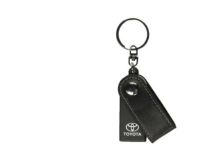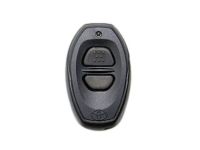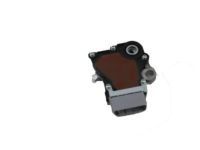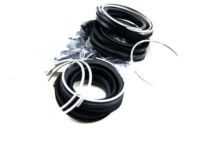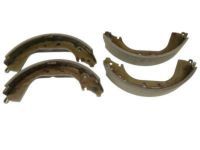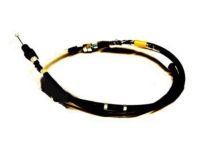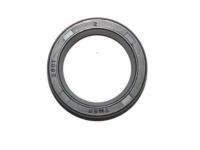Why choose ToyotaPartsDeal
- Optimal Shopping Experience
Want to buy parts for your Toyota T100? Look no further than ToyotaPartsDeal.com, the best place for Toyota T100 genuine parts. For years, all of our Toyota T100 auto parts and accessories have been expedited directly from dedicated dealers and backed by the manufacturer's warranty, so buying from ToyotaPartsDeal.com is always risk-free.
- Dedicated Customer Service
Our first-class customer service team is committed to providing you with the best assistance possible. Dedicated representatives are standing by to assist you by email, live chat, or phone. Every effort is made to ensure your order for OEM Toyota T100 parts arrives fast no matter your location in the nation, so your vehicle is up and running and back on the road.
- Unbeatable Prices
What makes us the best online source for Toyota T100 parts and Toyota T100 truck parts? Our goal is to offer the lowest prices. You get giant savings shopping with ToyotaPartsDeal.com. With a complete Toyota T100 parts catalog, we cover a full selection of affordable OEM Toyota T100 parts and pickup parts with a huge inventory.
Popular Genuine Toyota T100 Parts
- Power Train/Chassis Parts View More >
- Body Parts View More >
- Engine/Fuel/Tool Parts View More >
- Electrical Parts View More >
Shop Genuine Toyota T100 Parts with ToyotaPartsDeal.com
The Toyota T100 was a full-size pickup truck produced by Toyota between 1993 and 1998, making its debut as a 1993 model-year vehicle. As Toyota had a strong presence in the compact pickup truck market in North America during the 1980s and 1990s, the company aimed to capture a share of the full-size pickup truck segment as well. Despite criticisms regarding its size, the T100 received J.D. Power and Associates Initial Quality Survey Best Full-Size Pickup award three times and was honored with Popular Science's "Best of What's New" award. The T100 was slightly larger than mid-size competitors like the Dodge Dakota and the compact Ford Ranger of that time, yet it was still smaller than other full-size American pickup trucks, positioning it uniquely within the market. Offered as a 2-door pickup truck, the T100 was equipped with engine options such as a 2.7 L inline 4-cylinder, 3.0 L and 3.4 L V6 engines, and a 3.4 L supercharged V6 engine for the TRD trim. These engines were paired with either a 4-speed automatic transmission or a 5-speed manual transmission. Although its production run was relatively short, the Toyota T100 represented an important step for the automaker in the full-size pickup truck segment.
Like all vehicles, the Toyota T100 has a lifespan that can be extended through proper maintenance and addressing common issues. Engine problems often signal impending failure, with T100 owners reporting metallic or squeaking noises, decreased power, poor fuel economy, and an illuminated Check Engine Light. To prevent starting or driving issues, inspect the speedometer cable, fuel tank, spark plug, fuel filter, and oil filter. Braking, suspension, and transmission failures are also common; concerns about rear brakes locking up on wet surfaces or parking cables not holding the vehicle properly warrant an inspection of the brake proportioning valve and parking brake cable. For suspension issues, prioritize the leaf spring bushing and ball joint, while transmission failure is often caused by a broken bell housing. To ensure a longer life expectancy for your T100, maintain all auto parts, including seat belts (which save lives in accidents), door locks and handles (for security and convenience), and fog lights and headlight bulbs (for clear, bright forward driving vision).
Directly from Toyota, genuine parts are superb with regards to quality, longevity, and fit. Every single part passed stringent quality testing, so you can be sure that it's safe, durable, and built to perform like your original parts. Obtaining Toyota T100 parts from our website would be your wisest choice. We carry a huge selection of genuine Toyota T100 parts at the lowest prices. You would save a lot of trouble and money as all OEM parts are backed by the manufacturer's warranty.
Toyota T100 Parts Questions & Answers
- Q: What is the purpose of the Park/Neutral position switch and how can it be checked and adjusted on Toyota 4Runner,Toyota T100 and Toyota Tacoma?A: The Neutral Safety Switch prevents the engine from starting in any gear other than Park or Neutral. To check the switch, raise the vehicle and unplug the electrical connector. Test the continuity across the indicated terminals using an ohmmeter. If the switch doesn't operate correctly, try adjusting it and retest. If it still fails, replace it. To adjust the switch, place the Automatic Transmission Shift Levers in Neutral, loosen the retaining bolt, align the groove and neutral basic line, and tighten the bolt. For replacement, follow specific steps for your vehicle model, which may include removing the exhaust pipe and heat shield or detaching oil cooler pipes. Unplug the electrical connector, remove the lock washer and nut, and then remove the retaining bolt to take out the switch. Installation is the reverse of removal, ensuring proper adjustment and continuity testing.
- Q: How to replace a wheel cylinder?A: To replace a wheel cylinder, it is important to always replace both of them at the same time. Start by removing the brake drum and brake shoes. Then, unscrew the brake line fitting from the rear of the wheel cylinder using a flare-nut wrench to avoid rounding off the corners. Be careful not to pull the metal line out of the wheel cylinder. Next, remove the two bolts securing the wheel cylinder to the brake backing plate and remove the wheel cylinder. Plug the end of the brake line to prevent fluid loss and dirt entry. For installation, attach the brake line to the wheel cylinder before installing the mounting bolts and tighten the line fitting after tightening the mounting bolts. Use a flare-nut wrench if available. Finally, install the Brake Shoe Set and brake drum, bleed the brakes, and thoroughly test the brake operation before driving the vehicle in traffic.
- Q: How do you replace the rear brake shoes on Toyota 4Runner,Toyota T100 and Toyota Tacoma?A: To replace the rear Brake Shoe Set on a vehicle, start by loosening the wheel lug nuts and raising the rear of the vehicle on jack stands. Remove the rear wheels and then the brake drum. If the drum is stuck, use penetrating oil and tap around the studs and flange to break it loose. If it is still stuck, screw bolts into the threaded holes in the drum and tighten them to push the drum off. If the drum is locked onto the shoes due to excessive wear, remove the plug in the access hole and use a screwdriver to push the actuator lever off the star adjuster and retract the shoes. Clean the brake assembly with brake system cleaner. Remove the hold-down springs, anchor springs, and adjuster assembly. Replace the brake shoes and lubricate the contact points on the backing plate with high-temperature brake grease. Clean and inspect the brake drum for any damage or wear, resurfacing or replacing it if necessary. Repeat these steps for the other rear brake assembly. Adjust the parking brake cable bellcrank on 4WD pick-ups and all 4Runner models. Install the brake drums and pump the brake pedal to adjust the shoes until they slightly drag on the drums. Install the rear wheels, lower the vehicle, and tighten the lug nuts. Finally, check the brake pedal position and test the brakes for proper operation before driving in traffic.
- Q: How to check and adjust the throttle valve cable on Toyota 4Runner,Toyota T100 and Toyota Tacoma?A: For 2003 and later model 3.4L V6 vehicles, it is important to note that they do not have a throttle valve cable. Instead, downshifts are controlled by an internal solenoid. Remove the shift solenoid valves from the valve body and the oil pipes. Remove the oil strainer if equipped, and then remove the valve body by removing the specified bolts. Lower the valve body and disengage the TV cable from the throttle cam. Insert the new cable through the hole in the case and secure it with the cable hold-down bolt. Connect the new TV cable to the cam and ensure that the groove of the manual valve is aligned with the pin of the lever before installing the valve body. Stake the cable stopper between 0.8 and 1.5 mm from the end of the cable sheath if the throttle cable being installed is new. Fill the transmission with new ATF and check the fluid level. Don't forget to check and adjust the TV cable if necessary.
- Q: How to replace the front and rear seals of the transfer case?A: This procedure applies to both the front and rear seals of the transfer case. It is not necessary to remove the transfer case to replace a seal. To begin, raise the vehicle and support it securely on jackstands. If replacing the front Transfer Case Seal, remove the front driveshaft; if replacing the rear seal, remove the rear driveshaft. Unstake and remove the companion flange retaining nut, then remove the companion flange. If the flange is difficult to remove, use a puller. Pry out the seal with a screwdriver or seal removal tool, being careful not to damage the seal bore. Lubricate the new seal lips with petroleum jelly and drive the seal into place with a large socket or seal installer tool. There is also a smaller seal inside the companion flange that may need to be replaced. The remainder of the installation is the reverse of removal, making sure to tighten the companion flange nut.




































